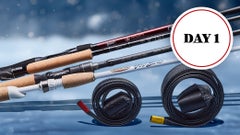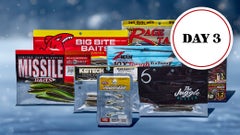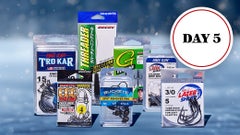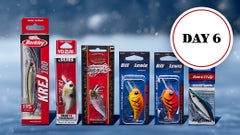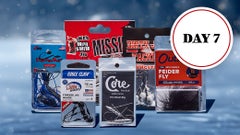Pre-Spawn Flipping Jig Patterns & Techniques
Any time you find bass holding close to the bank, pitching and flipping a jig is an ideal method for presenting a bait accurately and efficiently in close quarters. When done correctly, there's no better way to effectively target bass in shallow, heavy cover. This technique allows you to make a quiet presentation, while at the same time reach places with pinpoint accuracy that just aren’t possible with other techniques. When Pre-Spawn rolls around, make sure you have a Flipping Jig tied up. There are few things in fishing like catching a big bass on a short line.
Rods:
When it comes to Flipping Jigs, opt for a longer, 'flipping stick' style rod in the 7'4” to 7'8” range with a Heavy action, Moderate bend, and plenty of backbone. You’ll need a rod capable of driving thicker gauge jig hooks home with authority and leveraging big fish out of dense cover, and you’ll also need a rod with a Fast or Extra Fast tip to help you make pinpoint, accurate flips and pitches. Try to avoid any overly stiff, "broomstick" rods, as they will impede your accuracy.
Reels:
Spring fish are notorious for eating your bait on the fall and swimming under the boat, so a speedy reel with a 7:1 to 8:1 gear ratio will allow you to catch up and get a hook in a fish you may otherwise miss. A faster gear ratio will also help you be more efficient and make more flips and pitches to promising targets. A standard 100 to 200-size casting reel is a great option because it allows you to make long casts and cover more water in between spots in addition to flips and pitches. However, a lot of anglers also prefer a shallow spool reel in the 70-size range to help prevent backlashes, especially when flipping light lures.
Line:
You will need a fishing line capable of handling heavy bass in thick, unforgiving cover. Spool up your favorite fluorocarbon from 20-25lb to stand up to abrasive cover, while still providing a stealthy, covert approach, as well as a tiny bit of stretch to help absorb hook set impact. If the water is heavily stained or off colored, a switch to 50lb braid can be advantageous if you can get away with it.
Modifications & Rigging:
Many trailers work well for Flipping Jigs, however, this technique greatly benefits from a bulky beaver/chunk-style trailer to slow down your bait's rate of fall and impart a more subtle action. When using a chunk-style trailer, try threading a 1-inch section of a stick worm up the shank of the hook before adding your chunk. This helps to position your chunk correctly, while also filling out the profile of your jig and even adding a splash of accent color if you so choose.
Tips & Tricks:
When it comes to the jig itself, utilizing a horizontal line tie can aid in your jig's ability to navigate the snaggy sticks and brushy cover where most flips are made. There is a vast array of head styles available, each with their own advantages, however, we usually prefer the Arkie style for its "skipability" and glide on the fall. Don't wuss out on a jig hook here! A Flipping Jig with a big beefy hook with a big barb is the way to go for horsing big bass from thick vegetation.
Colors:
Natural colors, like Black, Black/Blue, PB&J, and Green Pumpkin variations, are hard to beat for nearly every scenario you may face during a day on the water. Choosing the perfect color will mainly depend on water clarity and local forage. Crawfish and bluegill tend to play a big part of bass forage during Pre-Spawn. Try a Green Pumpkin Candy trailer to mimic a bluegill or something with some red flake to get more of a crawfish pattern.
































